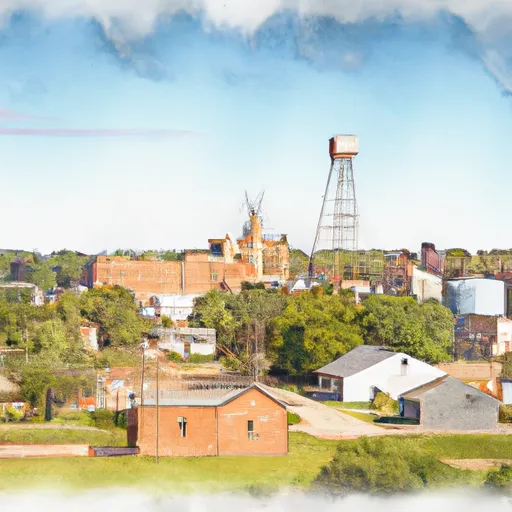-
 Snoflo Premium
Snoflo Premium
Get unlimited access to all our content
With no Ad interruptions! - Start Your Free Trial Login with existing account
Wakefield
Eden Index
Climate
7.5
•
Recreation
1.1
•
Community
2.2
•
Safeguard
3.9/10

Wakefield, Nebraska is a picturesque town located in Dixon County, nestled along the beautiful Elkhorn River. The climate in Wakefield is characterized by hot summers and cold winters. Summers are usually mild with temperatures ranging from the mid-70s to low 90s (°F), while winters are cold with temperatures dropping to the 20s and occasional snowfall.
The Elkhorn River, which flows through Wakefield, plays a significant role in the town's hydrology constituents. Its waters provide a vital resource for recreational activities such as fishing, canoeing, and kayaking. The river is home to a variety of fish species, including catfish, bass, and walleye, attracting anglers from all over the region.
Wakefield is also surrounded by abundant opportunities for outdoor recreation. The town boasts several parks and nature areas, including the Indian Trails Park and the Wakefield State Recreation Area. These areas offer hiking trails, picnic spots, and camping facilities, allowing visitors to immerse themselves in the natural beauty of the region. Whether it's exploring the river, fishing, or enjoying nature walks, Wakefield provides a serene environment for outdoor enthusiasts to enjoy.
What is the Eden Index?
The Snoflo Eden Index serves as a comprehensive rating system for regions, evaluating their desirability through a holistic assessment of climate health, outdoor recreation opportunities, and natural disaster risk, acknowledging the profound impact of these factors on livability and well-being.
Climate Health Indicator (CHI): 7.5
Wakefield receives approximately
736mm of rain per year,
with humidity levels near 84%
and air temperatures averaging around
10°C.
Wakefield has a plant hardyness factor of
5, meaning
plants and agriculture in this region thrive during a short period during spring and early summer. Most
plants will die off during the colder winter months.
By considering the ideal temperature range, reliable water supplies, clean air, and stable seasonal rain or snowpacks, the Climate Health Indicator (CHI) underscores the significance of a healthy climate as the foundation for quality living.
A healthy climate is paramount for ensuring a high quality of life and livability in a region, fostering both physical well-being and environmental harmony. This can be characterized by ideal temperatures, reliable access to water supplies, clean air, and consistent seasonal rain or snowpacks.
Weather Forecast
Streamflow Conditions
Elkhorn
Area Rivers
Elkhorn
Snowpack Depths
Elkhorn
Reservoir Storage Capacity
Elkhorn
Groundwater Levels
Recreational Opportunity Index (ROI): 1.1
The Recreational Opportunity Index (ROI) recognizes the value of outdoor recreational options, such as parks, hiking trails, camping sites, and fishing spots, while acknowledging that climate plays a pivotal role in ensuring the comfort and consistency of these experiences.
Access to outdoor recreational opportunities, encompassing activities such as parks, hiking, camping, and fishing, is crucial for overall well-being, and the climate plays a pivotal role in enabling and enhancing these experiences, ensuring that individuals can engage in nature-based activities comfortably and consistently.
Nearby Ski Areas
Catastrophe Safeguard Index (CSI):
The Catastrophe Safeguard Index (CSI) recognizes that natural disaster risk, encompassing floods, fires, hurricanes, and tornadoes, can drastically affect safety and the overall appeal of an area.
The level of natural disaster risk in a region significantly affects safety and the overall livability, with climate change amplifying these risks by potentially increasing the frequency and intensity of events like floods, fires, hurricanes, and tornadoes, thereby posing substantial challenges to community resilience and well-being.
Community Resilience Indicator (CRI): 2.2
The Community Resilience Indicator (CRI) recognizes that education, healthcare, and socioeconomics are crucial to the well-being of a region. The CRI acknowledges the profound impact of these elements on residents' overall quality of life. By evaluating educational resources, healthcare accessibility, and economic inclusivity, the index captures the essential aspects that contribute to a thriving community, fostering resident satisfaction, equity, and social cohesion.

